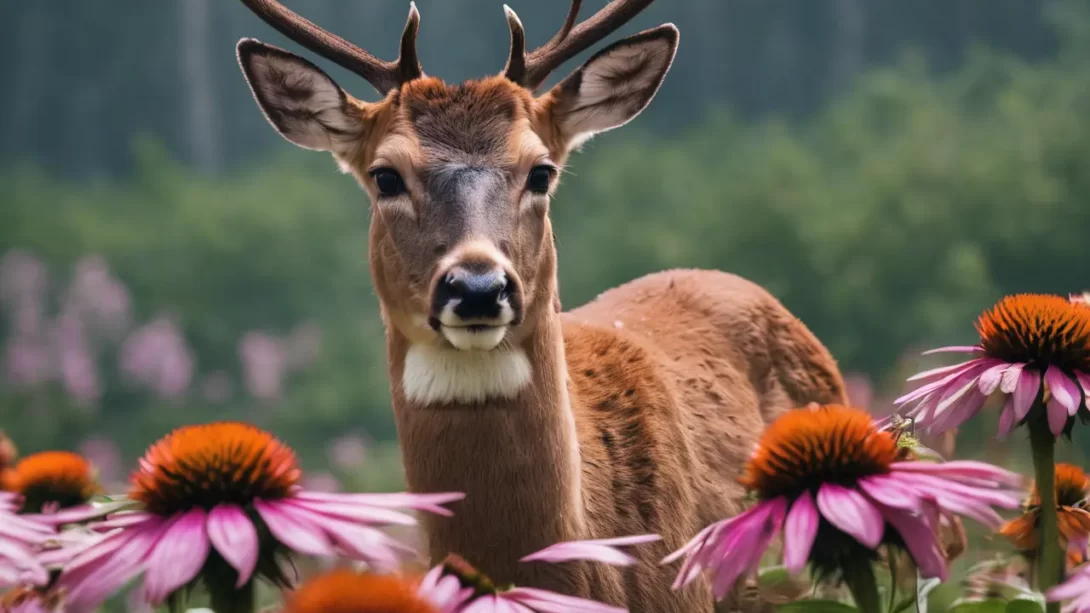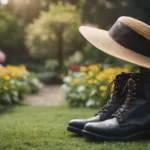Echinacea, commonly known as coneflowers, is a favorite among gardeners for its vibrant colors and hardy nature. However, those who share their environment with deer often face the challenge of protecting their cherished plants from these frequent garden visitors. A prevalent question that arises is: do deer find Echinacea as appealing as gardeners do? This article seeks to address this concern by exploring the relationship between deer and Echinacea, offering insights and strategies to protect these beloved perennials.
Echinacea
Echinacea plants, with their distinctive spiky centers and daisy-like petals, are not only visually appealing but also renowned for their medicinal properties. These perennials come in a variety of colors, including purples, pinks, and whites, and are known for their ability to attract pollinators like bees and butterflies. Echinacea thrives in well-drained soil and full sunlight, making them a low-maintenance choice for a wide range of garden settings. Their resilience and long blooming period add to their popularity in home gardens.
Deer Feeding Habits
Deer are opportunistic feeders with a diet that varies seasonally. In general, they prefer young, tender plants and often feed on shoots, leaves, and flowers. The dietary preferences of deer can change based on what is available in their environment, and they are known to adapt to different food sources throughout the year. In gardens, deer can be a significant concern, as they can quickly damage or completely consume a wide range of plants, leaving a trail of destruction in their wake.
Understanding the feeding habits of deer is key to determining whether your Echinacea plants are at risk. Factors such as the local deer population, the availability of natural food sources, and the time of year can all influence the likelihood of deer feasting on your garden plants.
Echinacea and Deer: The Attraction Factor
When it comes to Echinacea and deer, the relationship can be somewhat unpredictable. Generally, Echinacea is not considered a top favorite for deer, but this doesn’t mean it’s completely safe from them. In areas where deer populations are high and food sources are limited, deer may be less selective and more likely to sample a wider variety of plants, including Echinacea. However, in regions where deer have ample natural food sources, Echinacea plants are less likely to be disturbed.
Anecdotal evidence from gardeners varies, with some reporting that their Echinacea plants are frequently nibbled by deer, while others find them untouched. Research on deer preferences tends to support the notion that Echinacea is not typically the first choice for deer, but it is not entirely deer-proof either.
Protecting Echinacea from Deer
For gardeners concerned about protecting their Echinacea plants from deer, several effective strategies can be implemented. Physical barriers are often the most reliable method of protection. Fences that are tall enough (at least 8 feet) can effectively deter deer, as they are hesitant to jump over barriers they cannot see the other side of. For individual plants or smaller garden areas, netting or protective covers can provide sufficient protection.
The use of deer repellents is another common approach. These products, available in both commercial and homemade varieties, work by making the plants less appealing to deer through unpleasant tastes or smells. It’s important to rotate repellents or reapply them frequently, especially after rainfall, as deer can become accustomed to these deterrents over time.
Another method is companion planting with deer-resistant plants. By surrounding Echinacea with plants that are known to be less palatable to deer, such as lavender, garlic, or ornamental grasses, you can create a natural deterrent that makes your Echinacea less attractive to these animals.
Long-Term Solutions and Considerations
Beyond immediate protective measures, there are long-term strategies for managing deer in gardens that can minimize their impact on Echinacea and other plants. One effective approach is landscape modification, which involves designing your garden in a way that is less attractive to deer. This could include planting deer-resistant varieties as a primary strategy and using Echinacea and other vulnerable plants in less accessible areas, perhaps closer to the house or in raised beds.
Creating a deer-resistant zone can also be beneficial. This involves establishing an outer layer of plants that are highly unappealing to deer, which acts as a natural barrier, protecting more desirable plants within. Incorporating plants with strong scents, thorny or hairy leaves, or those that deer have historically avoided can create an effective buffer zone.
Additionally, maintaining a balance with local wildlife is crucial. While protecting your garden is important, it’s also beneficial to consider the ecological role of deer and other wildlife in your area. Providing alternative food sources for deer, away from your garden, can sometimes divert their attention. This can be achieved by leaving a part of your property wild or planting a deer-friendly area at a distance from your main garden.
Conclusion
In conclusion, while Echinacea is not typically a deer’s first choice, these animals may still pose a threat to your plants, particularly in areas with high deer populations or limited food sources. Implementing protective measures such as physical barriers, repellents, and companion planting can effectively safeguard your Echinacea. Additionally, considering long-term strategies like landscape modification and creating deer-resistant zones can help ensure the coexistence of your garden with local wildlife.
Understanding and managing the interaction between deer and garden plants like Echinacea is key to maintaining a thriving garden. With the right approaches, it’s possible to enjoy the beauty of Echinacea and other perennials while coexisting harmoniously with the natural wildlife in your area.




